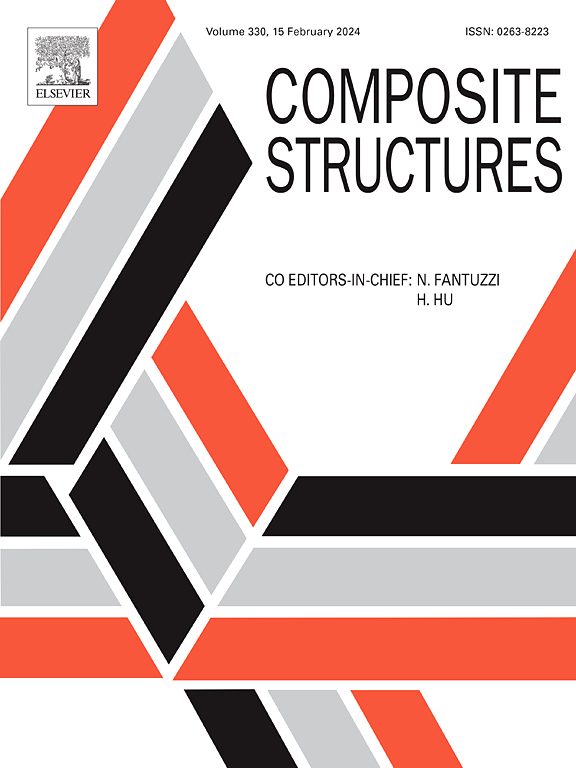Repeated and multiple hail impacts on honeycomb sandwich panels: An experimental and numerical study
IF 6.3
2区 材料科学
Q1 MATERIALS SCIENCE, COMPOSITES
引用次数: 0
Abstract
Sandwich panels are often utilized in structures to enhance stability, reduce weight, and simplify repairs. Airplanes equipped with honeycomb core sandwich panels are susceptible to hail impact damage. This type of damage can cause barely visible impact damage (BVID), which affects the core but not the face sheets. The main objective of this study is to examine the failure mechanisms of the Nomex honeycomb sandwich panel when subjected to single, repeated (i.e. at the same location), and multiple (i.e. at different locations) hail impacts. The experimental study was conducted to investigate the hail’s behavior upon impact on rigid structures and, subsequently, to assess the failure modes of sandwich structures under repeated hail impacts. The objective was to develop a suitable numerical model for studying the response of sandwich structures under multiple and random hail impacts. The sandwich panel, which consisted of four layers of woven glass epoxy as the face sheet and a Nomex honeycomb layer with a thickness of 16 mm as a core, was tested for its resilience to repeated hail impacts with 5, 10, 15, and 20 impacts. Four failure mechanisms were observed in the sandwich plate, including delamination growth at the top face sheet and three types of failure in the core. The core failures, initiated with wrinkling of the core walls, progressed to wall rupturing at higher impacts and, after 15 impacts, separated the face sheet from the core. Numerical models were then deployed to investigate the effects of hail size in a single impact and the effect of the random distribution of multiple hail impacts. The severity of damage caused by multiple impacts from lower-energy hail (30 mm in size at 21 m/s) was in a similar level as damage from a single impact by higher-energy hail (>40 mm in size at 30 m/s). The damage was almost initiated after eight impacts under the site, which experienced two close impacts.
求助全文
约1分钟内获得全文
求助全文
来源期刊

Composite Structures
工程技术-材料科学:复合
CiteScore
12.00
自引率
12.70%
发文量
1246
审稿时长
78 days
期刊介绍:
The past few decades have seen outstanding advances in the use of composite materials in structural applications. There can be little doubt that, within engineering circles, composites have revolutionised traditional design concepts and made possible an unparalleled range of new and exciting possibilities as viable materials for construction. Composite Structures, an International Journal, disseminates knowledge between users, manufacturers, designers and researchers involved in structures or structural components manufactured using composite materials.
The journal publishes papers which contribute to knowledge in the use of composite materials in engineering structures. Papers deal with design, research and development studies, experimental investigations, theoretical analysis and fabrication techniques relevant to the application of composites in load-bearing components for assemblies, ranging from individual components such as plates and shells to complete composite structures.
 求助内容:
求助内容: 应助结果提醒方式:
应助结果提醒方式:


